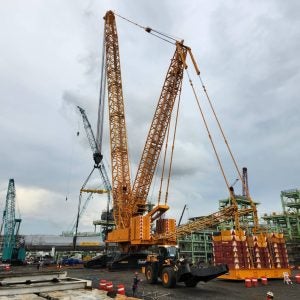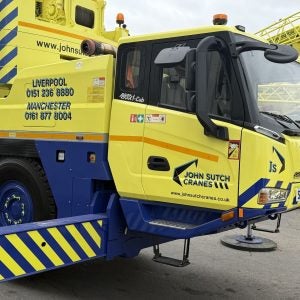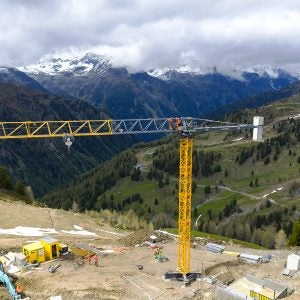Just before Christmas I spoke to Wessel Helmens, Mammoet's innovations director, and independent engineer Piet Stoof, about the development of their Focus concept.
I first interviewed Stoof about his idea for this crane in 2013, before he had agreed to work with Mammoet to bring the idea to reality. The key concept when we first discussed the crane was that it would be assembled on site out of chords and struts, rather than welded lattice sections. The advantage of this approach is that the crane's boom can be much larger (and therefore stronger) than prefabricated sections, which are limited to the dimensions of a standard container.
Informed by their initial conversations with the oil industry, Helmens and Stoof have now developed a second potentially game-changing concept for the Focus: a system that will allow Mammoet to assemble a 2,000t-capacity crane with luffing jib in just 22m x 22m of space, with no need to lay the boom or jib down. This should be ideal for replacing big refinery components, with as little downtime as possible.
The need to squeeze hundreds of tonnes of lifting and moving power into tight, working, job sites features heavily in the series of case studies on industrial installations that opens our feature section this month. Jobs like this, moving vessels and presses in and out of very restricted spaces, require a range of innovative techniques and uncommon combinations of equipment: jacking gantries, strand jacks and other alternative lifting systems, often mounted on, or used alongside, SPMTs and skidding systems.
At the Cranes Today offices in the winding medieval streets around St Paul's Cathedral, the restrictions on space in London are very clear.
The solution to this challenge is also clear: perhaps nine out of every ten tower cranes around the city are luffers, ranging from small hydraulic cranes, up to the biggest Favelle Favco units. In this issue, tower crane expert Heinz-Gert Kessel gives a detailed account of how this crane type has developed, looking at how engineers have delivered cranes with increasingly compact out-of-service dimensions, without compromising on safety or sacrificing lifting power.
Our country report this month is on Greece. Even that piece, coincidentally, looks in part at how local companies have developed innovative solutions for changing out power station components. But the main squeeze here is not at the jobsite, Sotiris reports, but on the customers' wallet. Greek crane and transport companies have had to innovate in their approach to the market, looking beyond national borders to bring high-end equipment and expertise drawn from years of work on tough wind farm jobs to neighbouring countries.
Taken together, I think all of these pieces show how effectively the industry responds to challenges. It's this problem-solving energy that makes this sector so interesting to write about. We've had our own little bit of innovation this month: we launched our new magazine, Dockside Lift & Move, at the end of the 2017. We got a good response to the magazine, and have now decided to publish it quarterly in 2018.
Since joining Cranes Today a dozen years ago, I’ve talked with my colleagues here about how the dockside industry has its own unique structure and supply chain. We covered dockside cranes in both Cranes Today and in Hoist, but neither was tightly targetted at suppliers and users of this equipment.
At the same time, it was clear to me and the rest of the team here that the approach we took with our other magazines, of focusing on cranes, was not appropriate to the dockside sector, where a much broader selection of equipment is used.
With Dockside Lift & Move we want to offer editorial that is useful and interesting to readers who purchase, specify, supply, maintain, and use lifting and handling equipment at ports and terminals around the world. And, we want to cover the full gamut of equipment and services they use, not just cranes.
If you'd like a copy of the first issue, or if you have an idea for a topic we should cover, email me at the address below.






